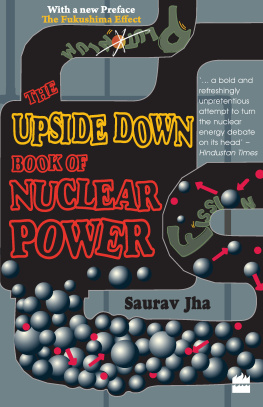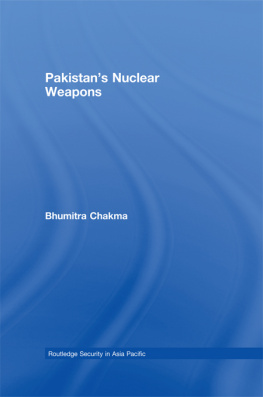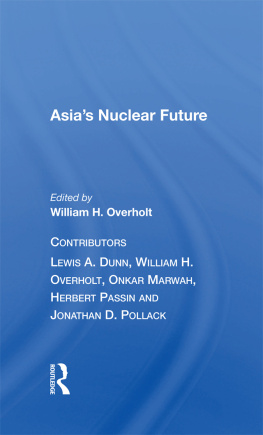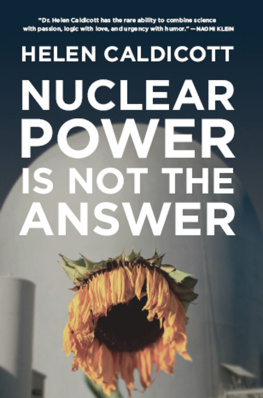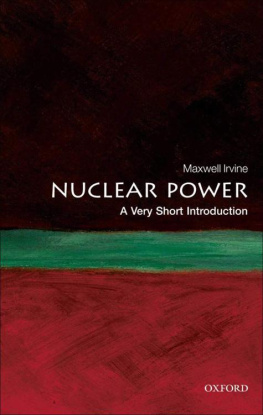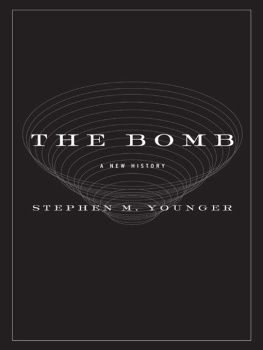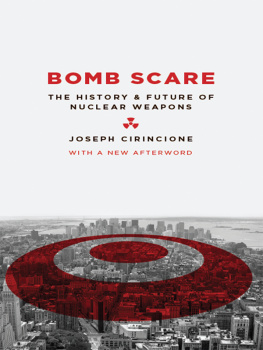IN MORTAL
HANDS
_______________________________
A CAUTIONARY HISTORY
OF THE NUCLEAR AGE
STEPHANIE COOKE

Copyright 2009 by Stephanie Cooke
This electronic edition published in 2012
A Hard Rains A-Gonna Fall, by Bob Dylan, copyright 1963; renewed 1991 Special Rider. All rights reserved. International copyright secured. Reprinted by permission.
Published by Bloomsbury USA, New York
All rights reserved. No part of this book may be used or reproduced in any manner whatsoever without written permission from the publisher except in the case of brief quotations embodied in critical articles or reviews. For information address
Bloomsbury USA,
175 Fifth Avenue,
New York, NY 10010.
LIBRARY OF CONGRESS CATALOGING-IN-PUBLICATION DATA
Cooke, Stephanie.
In mortal hands : a cautionary history of the nuclear age /
Stephanie Cooke.1st U.S. ed.
p. cm.
Includes bibliographical references and index.
1. World politics20th century. 2. World politics21st century.
3. Nuclear energyPolitical aspects. 4. Nuclear weaponsPolitical aspects.
5. Nuclear terrorismPrevention. I. Title.
D445.C7355 2009
909.825dc22
2008039388
First U.S. Edition 2009
ISBN 978 1 6081 9157 4 (e-book)
www.bloomsburykids.com
For James, my son
Contents
On August 5, 1945, as an army Air Forces pilot and his crew loaded a nuclear weapon called Little Boy into a B-29, a young British woman named Mary Buneman, nine months pregnant and living in Berkeley, California, felt the first unmistakable pains of labor. Across the Pacific on Tinian Island, where the loading operation was under way, a softball game also was in progress. The pilot, Lieutenant Colonel Paul W. Tibbets, asked a sign painter to leave the field so he could apply his mothers name beneath the cockpit windownice and big, Tibbets had said. That day and whenever he got anxious, Tibbets remembered how his mother had assured him he would not lose his life as punishment for arguing fiercely with his father about becoming a pilot. Her name was Enola Gay.
Sleep was impossible for some of the Enola Gay crewmen that night, just as it was for Mary Buneman at the Berkeley General Hospital. Tibbets and his crew began the fifteen-hundred-mile journey to Japan at 2:45 the following morning. While the Enola Gay, with Little Boy on board, flew through the darkness on a mission that would immediately end some seventy thousand lives, Mary gave birth to her second son. It was still Sunday in Berkeley, in the late afternoon. Nothing was further from my thoughts than the time and the date in Japan, Mary later recorded in her diary.
Not yet twenty-five, Mary Buneman (pronounced Bune-a-man) had lived with the secret of the bomb project since 1943, when her husband, Oscar, told her about it in hushed tones of deathly secrecy. The couple, still in England then, was about to move to the United States with their first son. At Berkeley, Oscar Bunemans expertise in mathematics and physics was applied to work on uranium enrichment, the process used to make the fissile material inside the core of Little Boy.
The bomb was dropped from an altitude of about ninety-six hundred meters and exploded five hundred and eighty meters above Hiroshima, a little to the northwest of the citys center. Later, a nineteen-year-old woman who survived reported a remarkable sight near a public garden. Amid the bodily remains, burned black and immobilized at the moment of impact, there was, she said, a charred body of a woman standing frozen in a running posture with one leg lifted and her baby tightly clutched in her arms.
On August 9, a second nuclear weapon, called Fat Man, was dropped on Nagasaki, immediately claiming another estimated forty thousand lives. The total death toll from both bombs would climb over the next five years to more than two hundred and fifty thousand.
At the hospital in Berkeley, flowers and gifts arrived, along with the grim headlines from Japan. Mary shared a room with a Venezuelan lady named Mercedes, who had given birth to a girl a few hours after Marys son was born. Mercedes was married to an American sailor stationed on a ship somewhere near Japan. The decision to drop the bombs was made in part to prevent soldiers and sailors like him from risking their lives by invading Japan to force surrender. But Marys roommate was crying.
Why did they have to go and drop another? she protested through her sobs. The first one would have finished the war off.
WHY INDEED?
Physicists had known the answer, or so they thought, as far back as the early 1900s: the first nation to detonate a weapon based on the energy inside an atom would control the world. Everything changed in the vortex of life-and-death events that surrounded August 6, 1945. The newborns would never know life without nuclear weapons; a mother and child were already among its victims; and a pilot, comforted by the memory of his mothers words, thought that all he was doing was bringing an end to war. The United States had emerged as the leader of the non-Communist world.
To some prescient observers, however, the bombing of Hiroshima signaled the end of democracy as it was experienced then and the beginning of the modern superstate. While her husband worked on the bomb, Mary Buneman was instructed not to make friends with her neighbors, a request, by the way, that she ignored. Then, after the war, when the couple returned to England, Mary was isolated from the rest of society in one of the newly built, heavily guarded atomic villages, where she lived under the watchful eye of security officials. Even back then, though, the fences were not as secure as they looked, and the secrets were leaking.
The scientists and their government overseers were at a crossroads. Thousands were now employed in the business of making nuclear weapons, but the war was over. What next for them?
Within less than two years, they knew the answer. The term cold war had been invented to describe deteriorating relations between the United States and its wartime ally the Soviet Union. That became the galvanizing force for building more bombs. Soon the scientists were inventing the thermonuclear weapon, with an explosive force a thousand times more powerful than that of the bombs dropped on Japan, and these weapons had in theory unlimited destructive potential. The Manhattan Project never really stopped.
Governments saw that there could be a positive side to nuclear and began to promote it as a way of producing electricity. In the United States this peaceful uses aspect not only provided a welcome antidote to the governments determination to rapidly escalate nuclear weapons production but was part of a program designed to win public acceptance of the expensive new arsenal. In other countries, like Britain and France, the primary purpose of so-called dual-use reactors was to produce plutonium for bombs. Yet the public was sold on the idea that the reactors were meant for electricity. In this heady atmosphere, when nuclear was seen as cutting-edge technology and the publics appetite for such advances ran high, officials could get away with promises that nuclear energy would eventually prove too cheap to meter. That this next chapter in the nuclear story might lead to covert nuclear weapons programs was widely recognized within the elite circles of scientists and government officials advancing the cause, but they convinced themselves that a solution would be found. It was easy enough to downplay the problem to the public, which is precisely what President Dwight D. Eisenhower did in his famous 1953 Atoms for Peace speech, because the issues were so complex. Nuclear energy would not come cheap, nor would it ever be freed of its link to nuclear weapons, because the critical technologies associated with both were one and the same, and both these facts were understood at the time.


